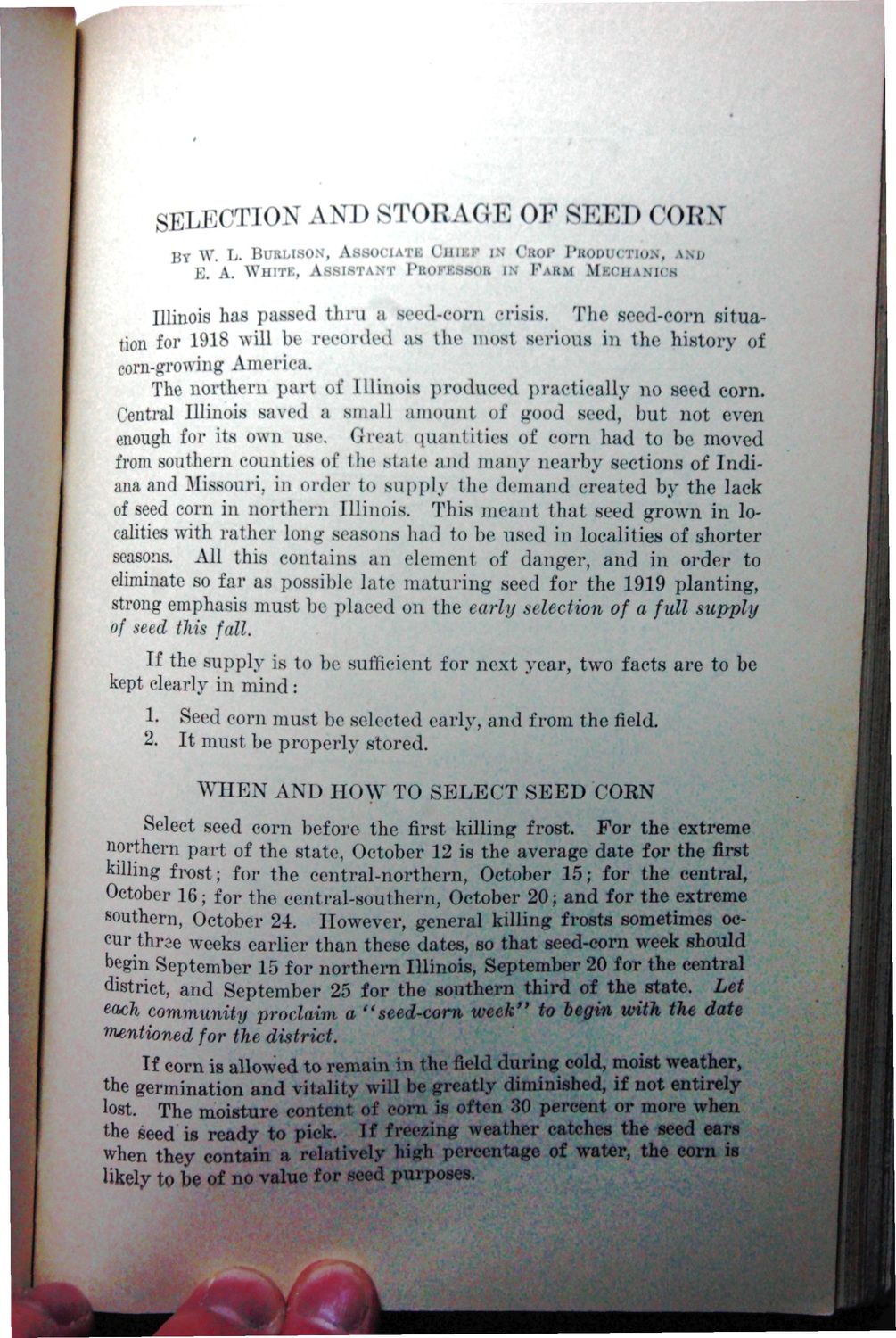| |
| |
Caption: War Publications - WWI Compilation 1923 - Article 44
This is a reduced-resolution page image for fast online browsing.

EXTRACTED TEXT FROM PAGE:
• SELECTION AND S'l'OllAOK OF SEED CORN BY W. L. BURLISON, ASS<" . . < n o r IN OCOP PHODI CTIOK, AM, E. A. WHITE, ASSIST A N:T I'UOFESMU IN FA KM MECHANICS Illinois has passed thru a leed-corn crisis. The seed-corn situation for 1918 will be recorded as the mosl serioua in the history of corn-growing America, The northern part of Illinois produced practically no seed corn. Central Illinois Bared I small amount Of good seed, but not even enough for its own use. Great quantities of corn had to be moved from southern counties of the slate and many nearby sections of Indiana and Missouri, in order to supply the demand created by the lack of seed corn in northern Illinois. This meant that seed grown in localities with rather long seasons had to be used in localities of shorter seasons. All this contains an element of danger, and in order to eliminate so far as possible late maturing seed for the 1919 planting, strong emphasis must be placed on the early .selection of a full supply of seed this fall. If the supply is to be sufficient for next year, two facts are to be kept clearly in mind: 1. Seed corn must be selected early, and from the field. 2. It must be properly stored. WHEN AND HOW TO SELECT SEED CORN * Select seed corn before the first killing frost. For the extreme northern part of the state, October 12 is the average date for the first killing frost; for the central-northern, October 15; for the central, October 16; for the central-southern, October 20; and for the extreme southern, October 24. However, general killing frosts sometimes occur three weeks earlier than these dates, so that seed-corn week should begin September 15 for northern Illinois, September 20 for the central district, and September 25 for the southern third of the state. Let e( Kh community proclaim a "seed-corn week" to begin with the date 'Mentioned for the district. If corn is allowed to remain in the field during cold, moist weather, the germination and vitality will be greatly diminished, if not entirely lost. The moisture content of corn is often :J0 percent or more when the seed is ready to pick. If freezing weather catches the seed ears when they contain a relatively high percentage of water, the corn is likely to be of no nine i'<>r seed purposes*
| |